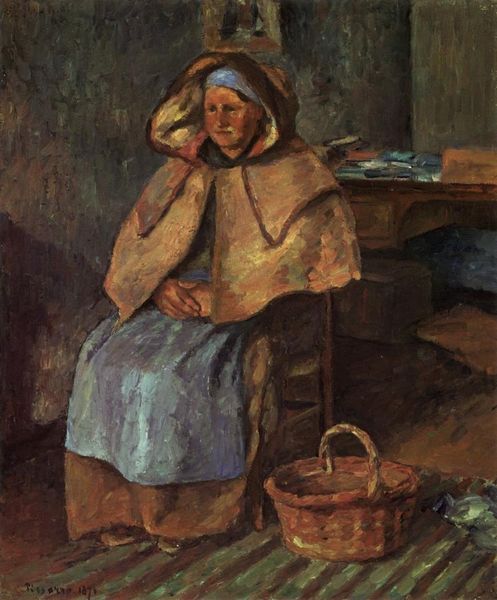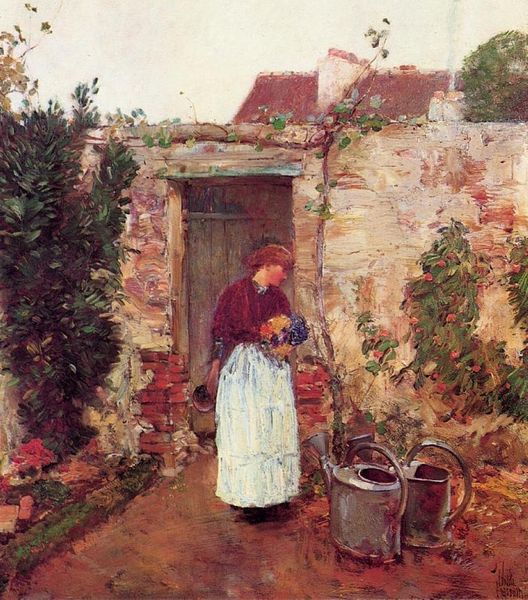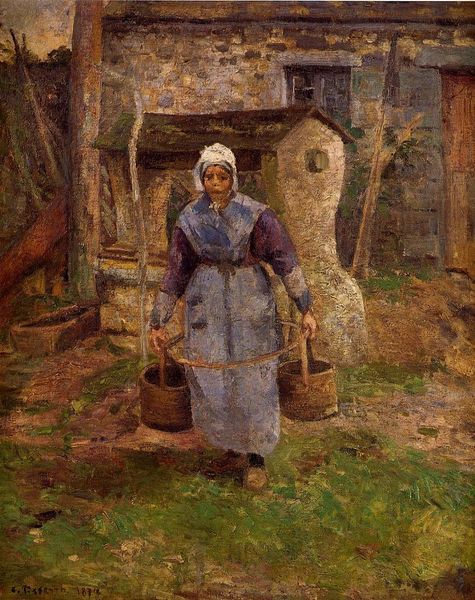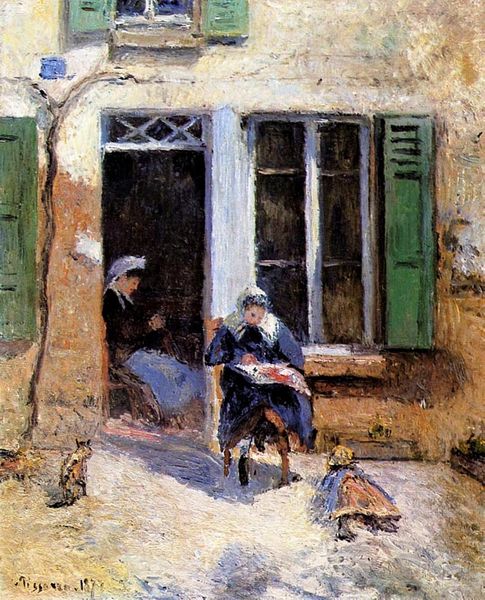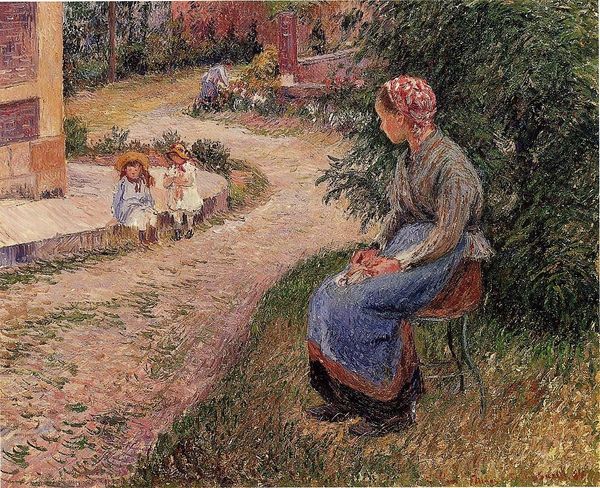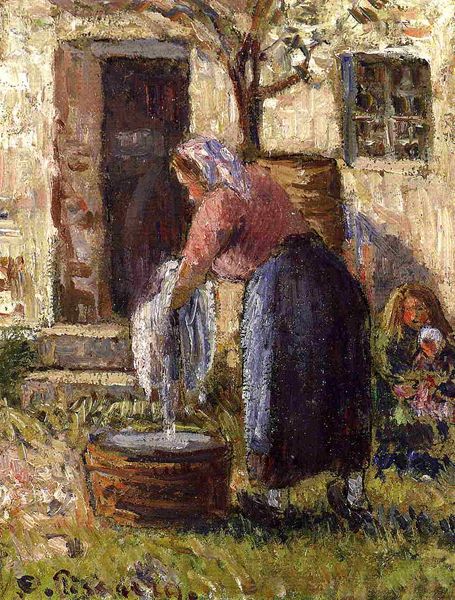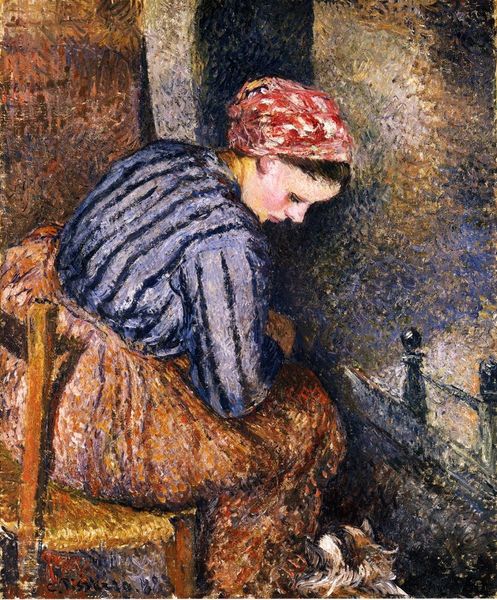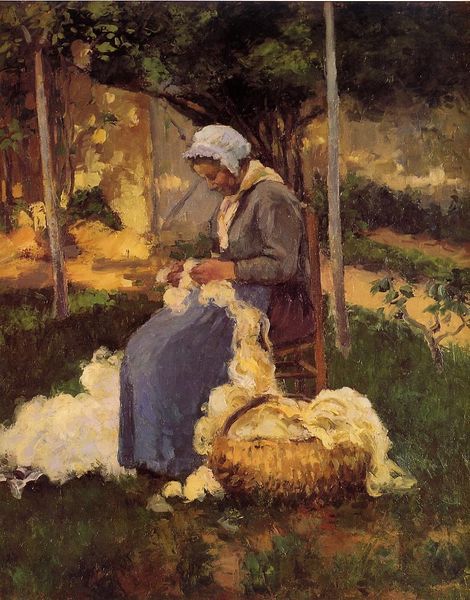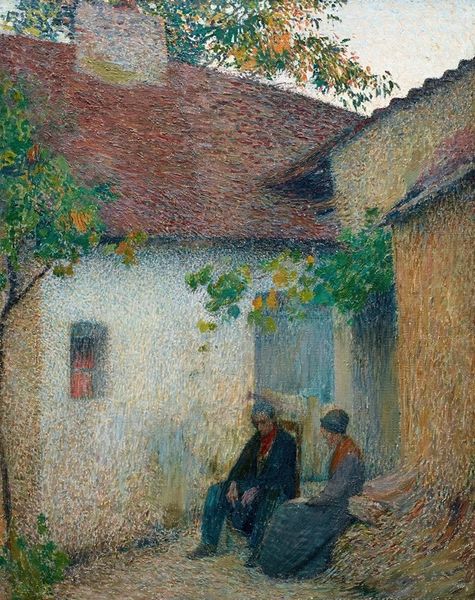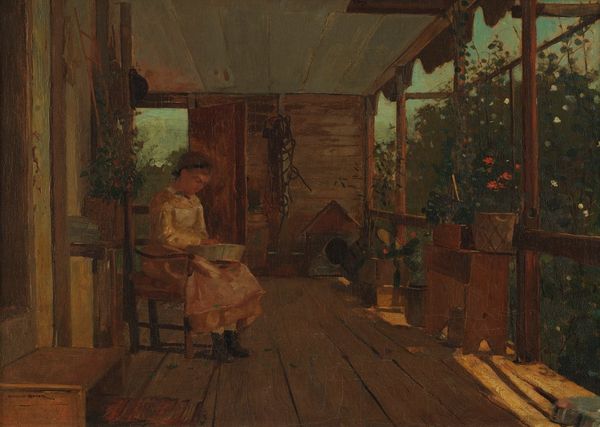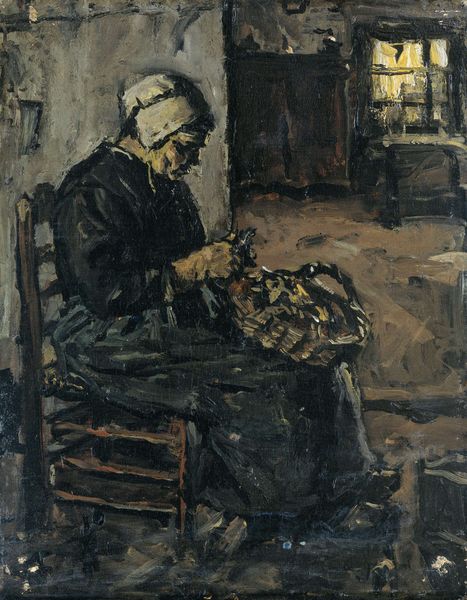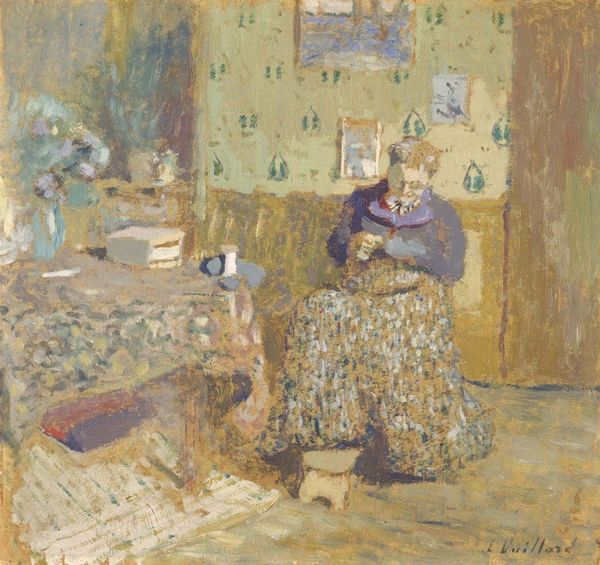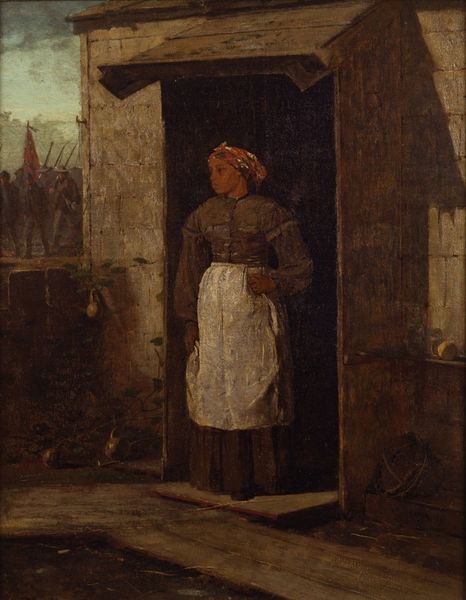
plein-air, oil-paint
#
portrait
#
impressionism
#
plein-air
#
oil-paint
#
oil painting
#
genre-painting
#
portrait art
#
watercolor
#
fine art portrait
Copyright: Public domain
Editor: This is "Mother Jolly" by Camille Pissarro, painted in 1874. It's an oil painting showing a woman sewing outdoors, and it feels surprisingly intimate for a plein-air work. What do you see in this piece? Curator: I see a complex interplay of class and representation. Pissarro, as an Impressionist and someone engaged with anarchist politics, was consciously depicting the working class. Notice how "Mother Jolly" is not idealized, but shown engaged in her labor. The term Mother at the time also represents a form of social currency – where women were seen as the central nodes that held together rural and sometimes urban working-class communities. What do you make of her posture? Editor: She seems very focused and grounded. Her gaze is downward, and she looks like she is a deep state of flow, not at all self-conscious about being observed. Curator: Precisely. The flowers behind her suggest a connection to nature and the cyclical rhythms of life. How do you see this fitting within the broader context of Impressionism? The scale isn't grand or imposing either. Editor: Well, it definitely fits the Impressionist interest in everyday life, but it seems to go further. It feels like Pissarro is trying to grant dignity and worth to this woman and her work. Is that accurate, and does that tie in with his political views? Curator: Absolutely. Pissarro’s anarchist beliefs shaped his artistic practice. He sought to depict the realities of the working class, challenging the dominant academic art which often ignored or romanticized them. Think about how this contrasts with the typical depictions of women in art at the time. Does it challenge the male gaze and celebrate female labor and resilience? Editor: I see your point! I hadn’t considered it that way before, but looking at it now, it really shifts my perspective. Thanks for helping me to unpack that! Curator: My pleasure! It's important to remember that art never exists in a vacuum and that this painting invites questions and is tied to the historical time frame. The socio-political lens allows us to engage with "Mother Jolly" in a far more intricate, layered way.
Comments
No comments
Be the first to comment and join the conversation on the ultimate creative platform.
